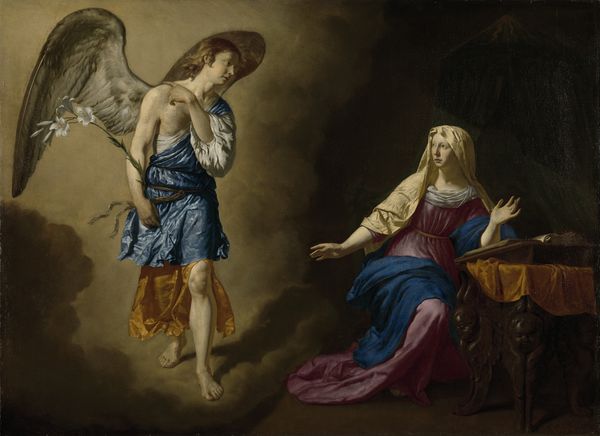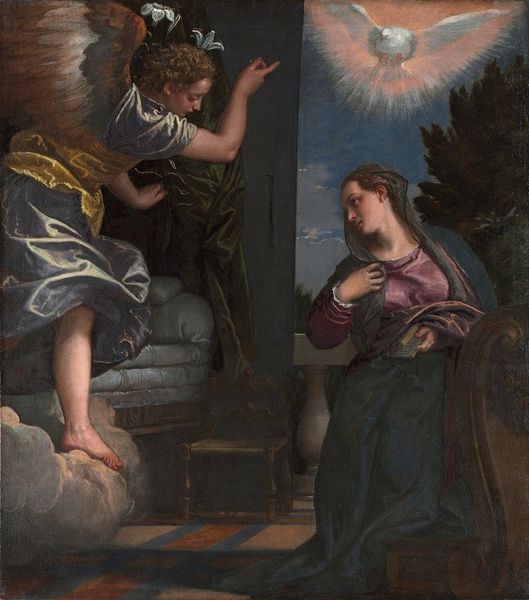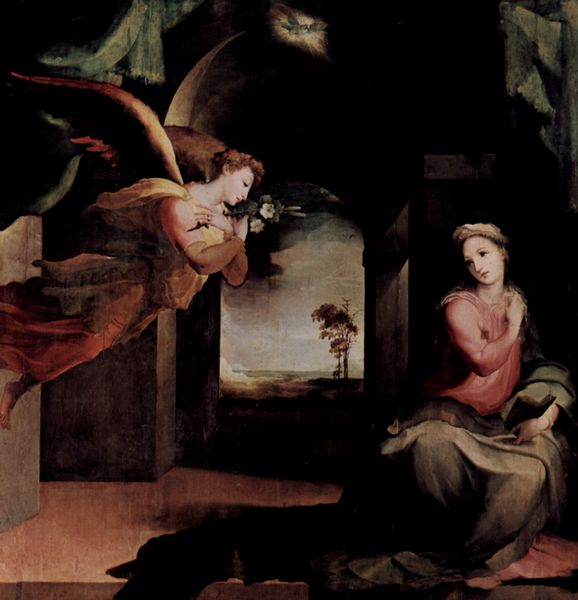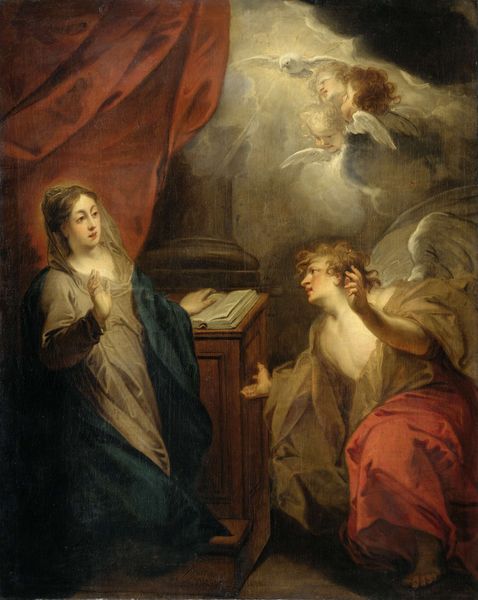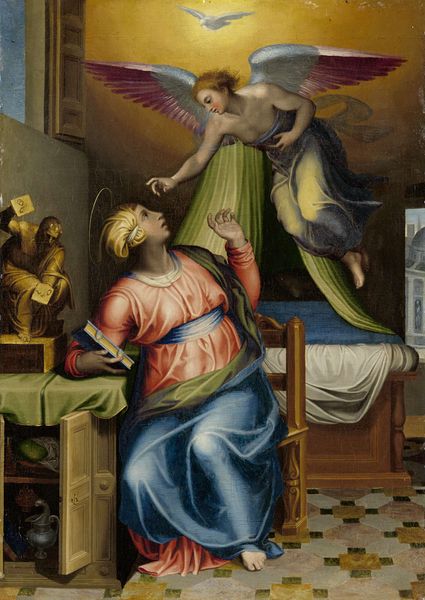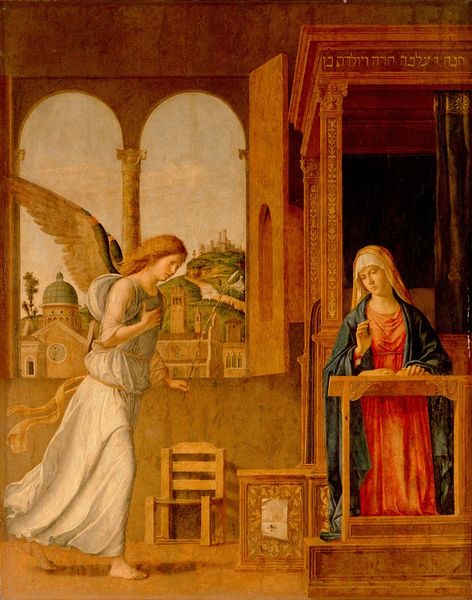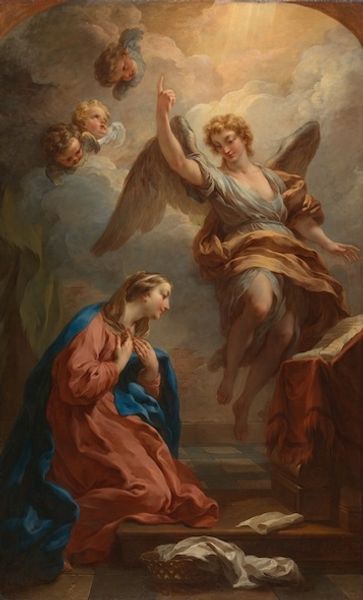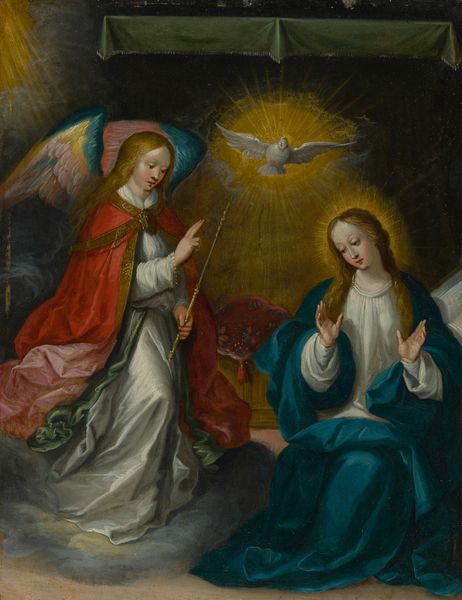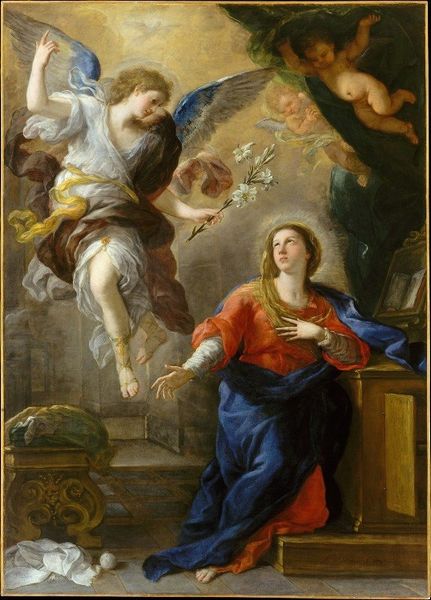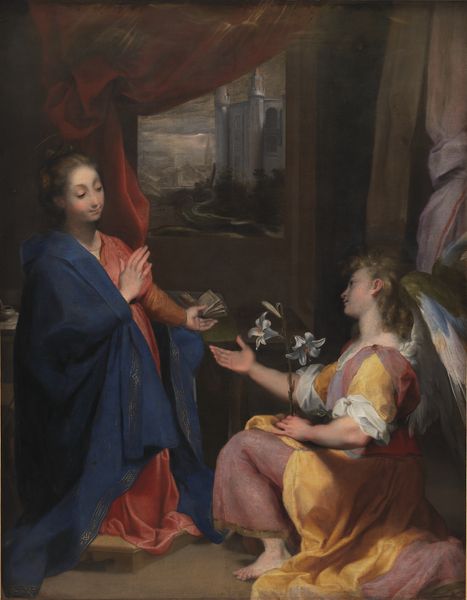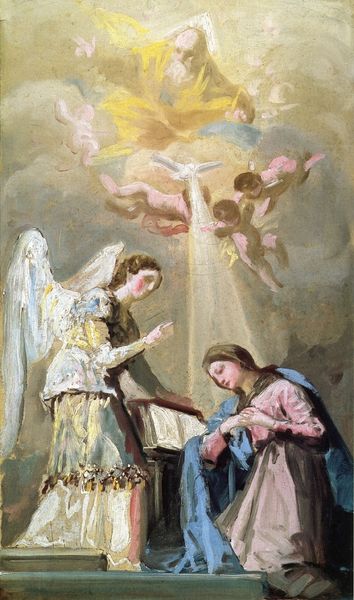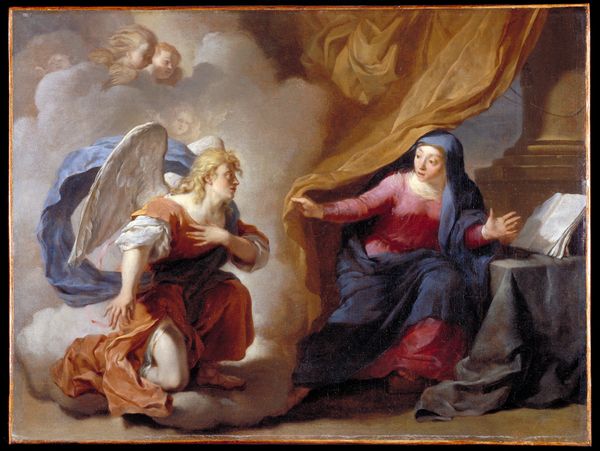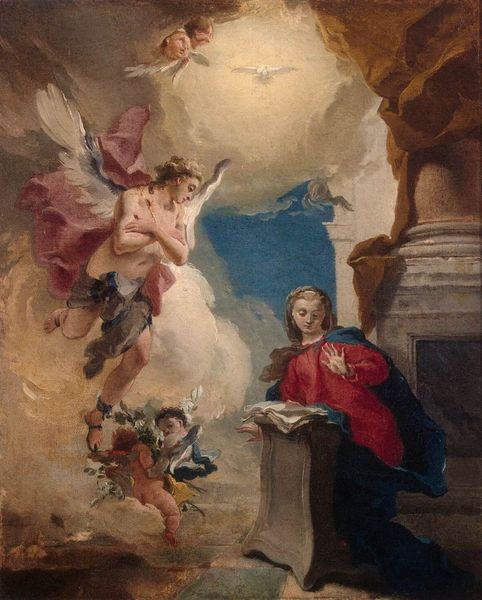
painting, oil-paint
#
allegory
#
baroque
#
painting
#
oil-paint
#
figuration
#
oil painting
#
history-painting
Dimensions: 9 1/4 x 7 in. (23.5 x 17.78 cm)14 1/2 x 12 1/8 in. (36.83 x 30.8 cm) (outer frame)
Copyright: Public Domain
Hans Rottenhammer painted the ‘Annunciation’ with oil on copper, sometime around the turn of the 17th century. It depicts the scene when the angel Gabriel visits Mary to announce that she will become the mother of Jesus. Painted in Germany at a time of great religious and political tension, the ‘Annunciation’ presents a moment of divine intervention in human history. This intimate depiction would have been very familiar to viewers of the time, drawing on a long visual tradition with its symbolic vocabulary: the dove represents the Holy Spirit, while God the Father looks down from above. It’s worth noting that while Rottenhammer was German, he spent much of his career in Italy, where he absorbed many of the stylistic traits of Italian Renaissance painting. The smooth surface and attention to detail speak to Rottenhammer's mastery of the oil medium. To appreciate this artwork fully, one must consider not only its formal qualities but also the historical, religious, and political contexts that shaped its creation and reception. Scholarly research, including the study of period documents and theological treatises, can reveal the deeper layers of meaning embedded within this seemingly simple image.
Comments
minneapolisinstituteofart almost 2 years ago
⋮
Rottenhammer was born in Munich. By 1591 he had made his way to Rome, where he became quite successful at painting devotional and allegorical images on copper, often in collaboration with the Flemish landscape painters Jan Breughel I (1568-1625) and Paul Bril (1554-1626). In 1596 he settled in Venice for a decade, and by 1606, he was permanently residing in Augsburg. Rottenhammer's recipe for success consisted in adapting the motifs of the Venetian school of painting and rearranging them in a small format, with attention to detail and an astute appreciation of the brilliant Venetian palette. These precious and portable works became coveted collector's items in the 17th century.
Join the conversation
Join millions of artists and users on Artera today and experience the ultimate creative platform.
